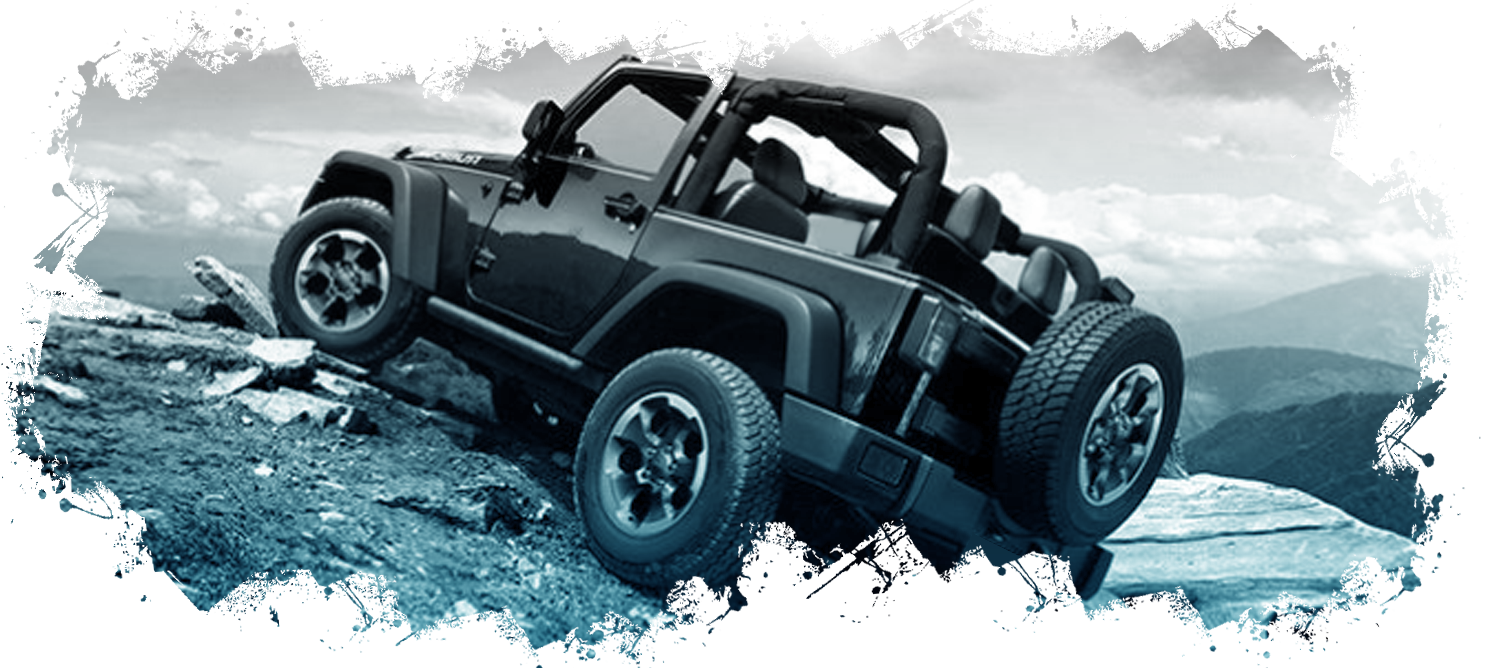Most pickup trucks and the more adventure-worthy SUVs on the market with 4WD have a dual-range transfer case (it’s also common in older off-roaders). This setup uses a transfer case behind the vehicle’s transmission to transfer drive to the rear differential only or to both front and rear differentials simultaneously. You’ll recognize this capability by the labels 2H, 4H, and 4L, either next to a stumpy transfer lever or on a dash or console switch.
The Stumpy Lever
2H is used for normal road driving. Two wheels are driven, usually the rear, in high-range, the normal gear ratio used for everyday driving. Some vehicles may be constant 4WD or all-wheel drive, in which case they won’t have the 2H option.
4H is used for normal-speed driving, but for when you need extra traction. These situations might include dirt roads, ice- or snow-covered roads, or hard-packed sand. Both front and rear wheels are engaged in high-range, using the same gear ratio as 2H for normal driving speeds. The front wheels aid in traction, making the vehicle more stable on loose surfaces.
4L is for when you need maximum traction and maximum power: sharp inclines and declines; heavily rutted tracks; deep mud and snow; soft, loamy sand; and extremely rocky surfaces. Both front and rear wheels are driven in low-range, which uses a lower gear ratio. The wheels turn much more slowly per revolution than they would in high-range, resulting in slower road speed but higher torque, which assists with traction and steep ascents. The lower gearing gives the vehicle better engine braking, making it easier to control on the descent.
If your 4WD vehicle has manual locking hubs, located in the center hub of the front two wheels, you’ll have to engage them when you’re using either 4H or 4L. These lock the hub and wheel to the front differential output shafts. Even with 4H or 4L engaged, the front axles won’t drive unless the hub is in the lock position. Automatic locking hubs don’t require this step, but you may have to reverse the vehicle after you disengage 4WD to unlock the hubs.
Tire Pressure
Another important factor in traction is matching tire pressure to suit the terrain. In poor traction situations, lowering tire pressure will balloon the tire and increase its footprint on the track surface. So always keep a good-quality air compressor and tire gauge in your vehicle.
Normal tire pressure for most large 4WDs is around 38 psi, but check the manufacturer’s recommended tire pressure, usually found in a sticker you’ll see when you open the driver-side door. For dirt roads in good conditions, that pressure will work fine. But if the surface is heavily corrugated, sandy, or dusty, lower the pressure to 30 psi. A lower tire pressure will also create a cushion effect on a rough road. Just make sure to drop cornering speeds and avoid sharp rocks to avoid the risk of a puncture or the tire rolling off the rim.
For sand driving, tire pressure should be approximately 18 psi (for a hard-packed beach, for example) or as low as 12 psi for dunes. At those pressures, there is a real risk of rolling the tire off the rim, so drive carefully and pump the tires back up as soon as possible.
For mud and rocky surfaces, drop tire pressure to between 20 and 25 psi. Pay special attention to the presence of rocks and sticks that could damage your tires and rims.
For snow, tire pressure has less of an effect, so fitting snow chains is a better option. For icy conditions, leave tire pressure at the standard level. A larger tire footprint can cause the vehicle to hydroplane on a watery surface.
The next time you venture off road, put these tips into action as soon as you encounter adverse conditions—not after you’ve lost traction. Engaging 4WD at the right time and adjusting tire pressure to suit the terrain can prevent you from having to dig your way out of a bog, and possibly save you big bucks by preventing damage to your vehicle.



